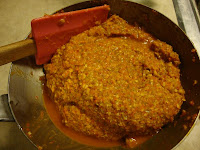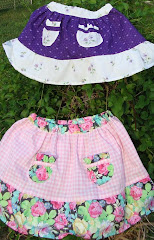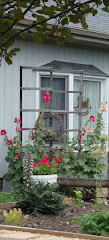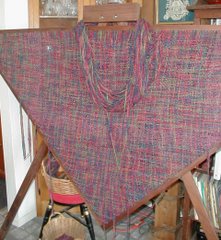Why? Because those are the main hot peppers, along with cayenne, which DH planted. And, when it came time to make a batch of hot pepper sauce, those were the two that were ready to harvest. The cayenne peppers aren't ripening as fast for some reason.
I make hot pepper sauce that's vinegar-based so it can set on the pantry shelf after opening. Because I make enough to last a year, I process pints or quarts for 10 minutes in a boiling water bath canner. Then when it's ready to use or we need to open another batch, I can decant into a recycled glass bottle more appropriate for dispensing dashes of hot sauce.
Like pickles, this hot pepper sauce benefits from some time just sitting in the jar before using. The flavors will meld and the vinegar will lose some of its overpowering strength. Which improves the overall flavor and lets the peppers shine. I do add a bit of salt and, if I remember, I add a few cloves of garlic -- we were so busy processing tomatoes for juice and ketchup, canning another 18 quarts of chicken broth from chicken backs and necks stockpiled in the freezer, and putting up the pimiento peppers from my brother-in-law's garden that I didn't think of pulling garlic to add this time till I was pureeing the sauce. Thus this batch is garlic-free.
This recipe doesn't require precise measurements but I've learned that it's a good idea to weigh the peppers and measure the amount of vinegar I use so I can come close to duplicating a batch if it turns out to be a very good year. Even with precise amounts, tho, the batches may not be the same year-to-year as the peppers themselves can vary depending on growing conditions. Some years just yield better flavor than others. Lucky for us, drier years seem to be particularly good.
For this year's Thai Dragon-Serrano Pepper Sauce, I used 12 ounces Thai dragon peppers and 26 ounces serrano peppers. Weighed before cutting off the short stems and little caps. I put the peppers in a large dutch oven and added 8 cups distilled white vinegar and 1 tablespoon salt to the pan. I loosely covered the pan and simmered the peppers in the vinegar-salt mixture for about 30 minutes, until they were softened for pureeing.
The peppers and liquid went into the blender in two batches as it was too much to process in one. I put a lid over the opening in the blender lid to try to hold back the splashing. Plus, I put the blender outside on the back deck instead of doing this in the kitchen. The wafting pepper steam will burn eyes and sinuses so fresh moving air is a good idea. Don't do the blending in a small enclosed space!
Even tho using the blender, it's a good idea to strain the mixture through a wire mesh. I processed it in our well-loved and tough-working vitamix and still had over a cup of seeds and pepper bits left to strain out. (The remaining pulp can make a good pest deterrent in the garden but ours went into the compost this time.)
I was left with 2 quarts and almost 1 pint of hot pepper sauce. It was too thick to sprinkle easily from a bottle so I thinned it slightly by adding almost 2 more cups of white vinegar. The hot pepper sauce went into canning jars which I processed for 10 minutes in a BWB. Yield of 6 pints.
If you've never canned before check out the latest Ball Blue Book of Preserving















